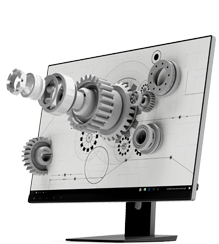TFT LCD LTPS - Low temperature polycrystalline silicon technology

Low temperature polycrystalline silicon (LTPS) refers to the synthesis of polycrystalline silicon at relatively low temperatures (~650 ° C and lower) compared to traditional methods (above 900 ° C) Due to the easy deformation of large glass panels
Low temperature polycrystalline silicon (LTPS) refers to the synthesis of polycrystalline silicon at relatively low temperatures (~650 ° C and lower) compared to traditional methods (above 900 ° C). Due to the easy deformation of large glass panels when exposed to high temperatures, LTPS technology is very important for the display industry. More importantly, the use of polycrystalline silicon in LTPS has great potential in the production of large-scale electronic devices such as flat panel displays or image sensors.
Polycrystalline silicon is a pure conductor composed of many crystals or highly ordered lattice products. In 1984, research showed that amorphous silicon was the perfect material for forming polycrystalline silicon with stable structure and low surface roughness. The silicon film is formed by low-pressure chemical vapor deposition (LPCVD) to minimize its surface roughness. Firstly, amorphous silicon is deposited at 560-640 ° C and then recrystallized at 900-1000 ° C. Starting from amorphous films instead of directly depositing crystals is to produce better structures and smoothness. In 1988, researchers discovered that using lower temperatures during the heat treatment stage, accompanied by advanced plasma enhanced chemical vapor deposition, could promote the production of higher levels of conductivity. These technological achievements deeply influence the fields of microelectronics, optoelectronics, and display enhancement.

The following applications require significant support from LTPS technology:
1.Glass the circuit - integrating drivers, scanners, and multiplexers - to reduce the use of additional ICs and glass connectors
2. Smaller display screen - high aperture ratio - mobile applications
3. Under high current loads (OLED requires current driving), it has better stability than amorphous silicon










